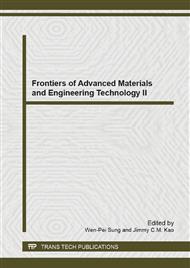p.1318
p.1322
p.1327
p.1331
p.1335
p.1339
p.1345
p.1349
p.1353
Research and Application of Adaptive Assembly Methods
Abstract:
Based on the principle of association and parameter-driven, adaptive assembly method of Components and parts is presented. Firstly, assembled relationship is predefined in the system. Then assembled parts to be assembled, the pre-defined relationships are detected in assembly environment. Followed the assembly constraints and size are determined according to the pre-defined relationship. If the part assembly-dimension does not match the size, the assembly-dimension is automatically changed to match interface size. The adaptive assembly of parts and components is completed. Finally, the the above-mentioned functions is achieved via the secondary development of SolidWorks and prototype application example is given.
Info:
Periodical:
Pages:
1335-1338
Citation:
Online since:
April 2014
Keywords:
Price:
Сopyright:
© 2014 Trans Tech Publications Ltd. All Rights Reserved
Share:
Citation:


